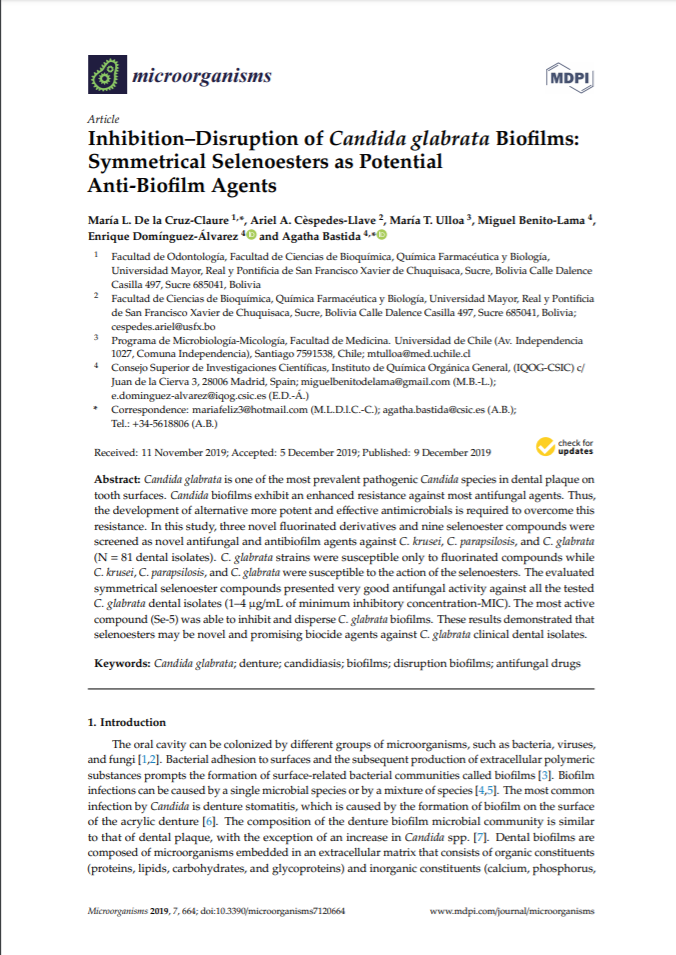Inhibition-Disruption of Candida glabrata Biofilms: Symmetrical Selenoesters as Potential Anti-Biofilm Agents

Fecha
2019Autor
De la Cruz-Claure, María L. [Univ Mayor, Fac Ciencias Bioquim Quim Farmaceut & Biol, Fac Odontol, Santiago, Chile]
Céspedes-Llave, Ariel A.
Ulloa, María T.
Benito-Lama, Miguel
Dominguez-Alvarez, Enrique
Bastida, Agatha
Ubicación geográfica
Notas
HERRAMIENTAS
Acceda a títulos restringidos
¿Cómo descargar?Resumen
Candida glabrata is one of the most prevalent pathogenic Candida species in dental plaque on tooth surfaces. Candida biofilms exhibit an enhanced resistance against most antifungal agents. Thus, the development of alternative more potent and effective antimicrobials is required to overcome this resistance. In this study, three novel fluorinated derivatives and nine selenoester compounds were screened as novel antifungal and antibiofilm agents against C. krusei, C. parapsilosis, and C. glabrata (N = 81 dental isolates). C. glabrata strains were susceptible only to fluorinated compounds while C. krusei, C. parapsilosis, and C. glabrata were susceptible to the action of the selenoesters. The evaluated symmetrical selenoester compounds presented very good antifungal activity against all the tested C. glabrata dental isolates (1-4 mu g/mL of minimum inhibitory concentration-MIC). The most active compound (Se-5) was able to inhibit and disperse C. glabrata biofilms. These results demonstrated that selenoesters may be novel and promising biocide agents against C. glabrata clinical dental isolates.
URI
https://doi.org/10.3390/microorganisms7120664http://repositorio.umayor.cl/xmlui/handle/sibum/6521
Coleccion/es a la/s que pertenece:
Si usted es autor(a) de este documento y NO desea que su publicación tenga acceso público en este repositorio, por favor complete el formulario aquí.